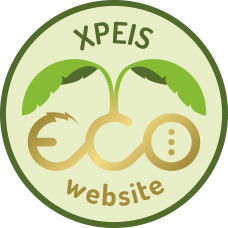Packaging as media: the power of communication through design and innovation

Packaging is not just a wrapper that protects a product: it is a true media, capable of communicating with consumers every day. Think about how many times we interact with packaging: while shopping, reading labels, opening a package at home, or handling a bottle of water. Every package carries information, messages, and increasingly, values.
It is indeed a powerful tool to convey key messages, influence purchasing decisions, and even promote social and cultural causes. Through design, materials, and written content, it can educate, raise awareness, and even entertain, becoming a true communication channel.
In this article, we explore how packaging can go beyond its primary function, transforming into a means of information, a cultural vehicle, a tool for social awareness, and a symbol of sustainability.
Packaging as an informational tool
It was born with a clear function: to contain and protect a product. But its role goes much further, as it represents the first point of contact between the consumer and what they are purchasing. Its surface is a valuable space to convey essential information, from product features to ingredients, usage instructions, and quality certifications.
Every day, millions of people read the packaging of the products they buy, making it one of the most widespread and influential communication tools. Its effectiveness depends on the clarity of the message and the accessibility of the information. Good packaging does not just list technical data but uses clear language and functional design to facilitate understanding. The most innovative companies adopt smart solutions, such as QR codes for digital content, intuitive infographics, and concise claims that capture attention.
Transparency is a key aspect. Today's consumers are increasingly attentive to what they buy and want to be informed about the origins of raw materials, production processes, and the environmental impact of products. Well-designed packaging thus becomes a tool of trust, capable of building a solid connection between brand and customer.
Packaging as a cultural and entertainment vehicle
It is not just an informational tool but can become a true medium for cultural dissemination and entertainment. More and more companies are experimenting with innovative ways to enrich the consumer experience, turning a simple wrapper into a channel that tells stories, stimulates curiosity, and enriches daily life.
A notable example is Bennet’s campaign, which introduced literature directly onto the packaging of some everyday products. Through quotes from authors like Dostoevsky and Murakami, the company gave new life to packaging, turning it into an invitation to read. At a time when data show growing disinterest in books, this initiative demonstrated that even the most ordinary moments, like buying a product at the supermarket, can become opportunities to spread culture.
Beyond literature, it can integrate interactive elements such as augmented reality, games, or digital experiences. Some brands have experimented with packages that, once scanned with a smartphone, unlock exclusive content, immersive stories, or even gamified experiences. This approach not only makes the product more engaging but creates a deeper connection between the brand and the consumer.
Innovation therefore does not only aim to improve the wrapper’s functionality but can transform it into a tool that enhances everyday experiences. Companies that understand this potential can stand out in the market, offering customers more than just a product: an opportunity to discover, learn, and be inspired.
Packaging and sustainability
In recent years, it has taken a central role in the debate on environmental sustainability. More and more consumers are attentive to the ecological impact of the products they buy and expect companies to adopt responsible solutions. This has pushed many brands to rethink how they design and communicate their packaging, turning it into a vehicle for environmental awareness.
Some companies are using it not only to reduce material consumption but also to educate consumers on sustainable practices. A significant example is Molino Rossetto and Mil Mil 76, which made it the protagonist of advertising campaigns in major national newspapers. In these communications, the companies clearly explained how the use of flexible and innovative materials can contribute to a lower environmental impact by reducing waste and improving production and disposal efficiency.
Another key aspect is the growing spread of compostable, biodegradable, and reusable packaging. Companies adopting these solutions not only show a real commitment to the environment but also communicate a strong message to their customers: sustainability is a shared responsibility.
It thus becomes a tool for raising awareness, capable of informing consumers about more conscious choices. Smart design can guide the customer toward correct waste disposal by including clear symbols and detailed recycling instructions. Additionally, many brands are beginning to use recycled materials and reduce plastic use, thereby promoting a circular economy.
In a market where sustainability is increasingly a key factor in purchasing decisions, responsible packaging is not only an environmental necessity but also a competitive advantage. Companies that successfully integrate innovation and sustainability not only reduce their ecological impact but also build a relationship of trust with consumers, who are increasingly inclined to reward brands committed to environmental responsibility.
It is much more than just a container: it is a powerful communication tool, capable of informing, entertaining, raising awareness, and promoting values. Companies that fully harness its potential can create a deeper connection with consumers, turning every interaction into an opportunity to convey key messages.
Innovation in packaging is not just about materials or design, but also the ability to tell stories and engage the public. Those who can rethink it strategically will stand out in the market and build a stronger, more responsible, and recognizable brand.


